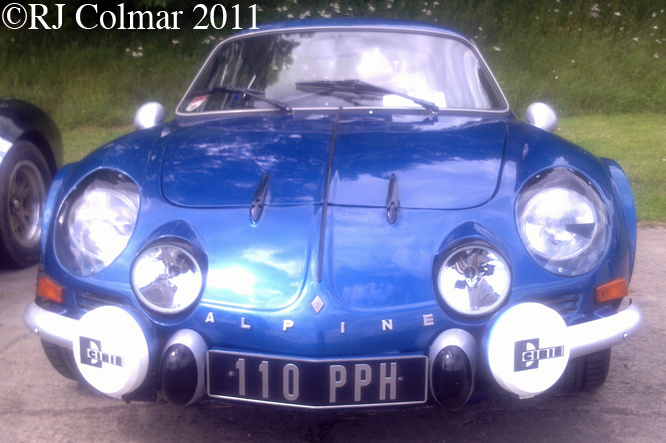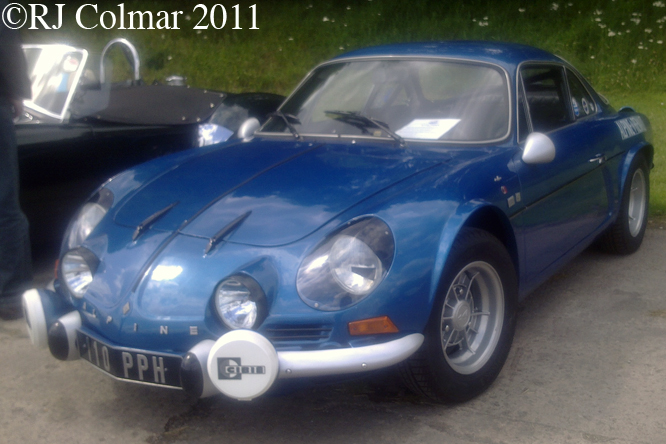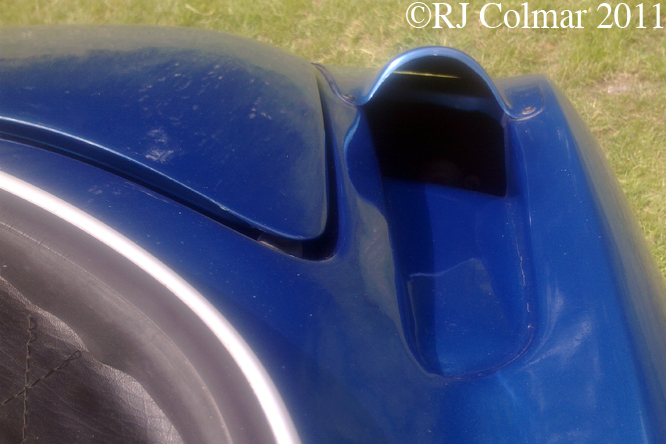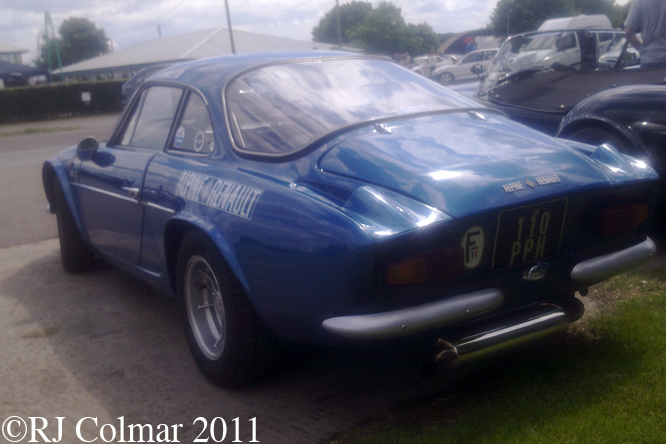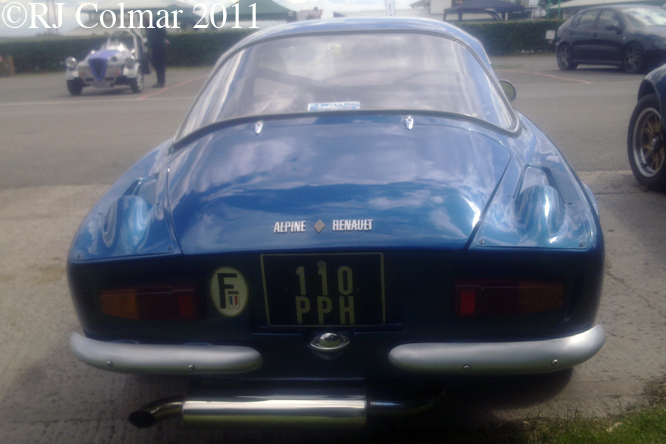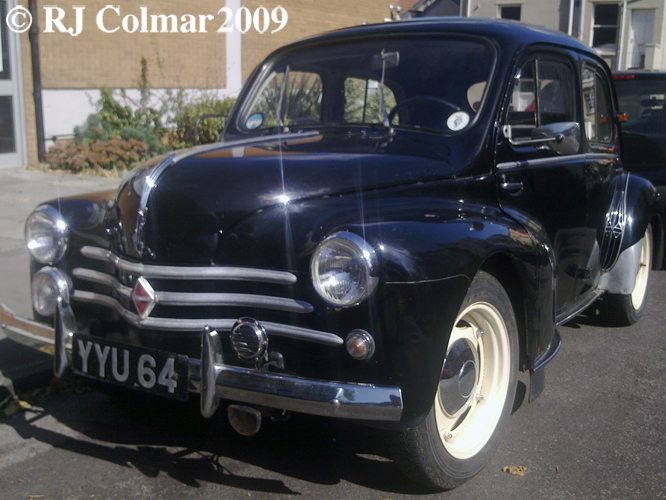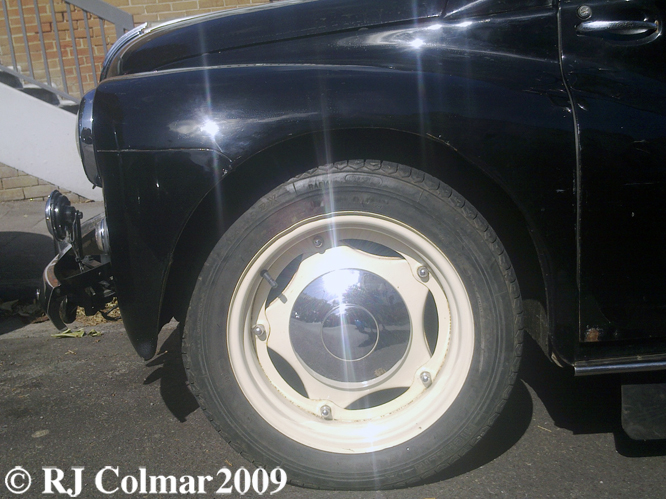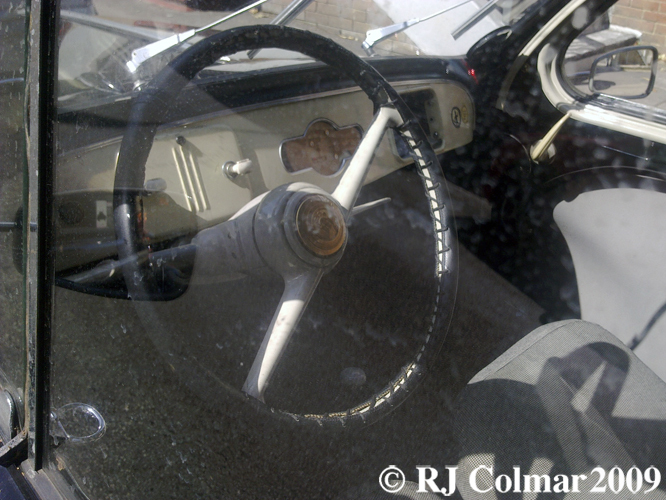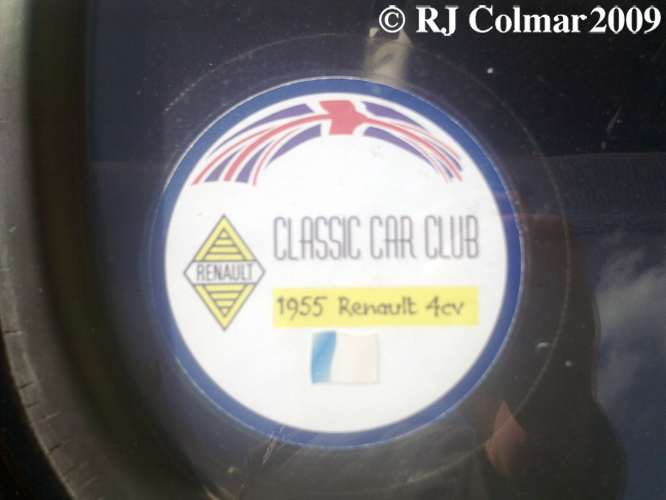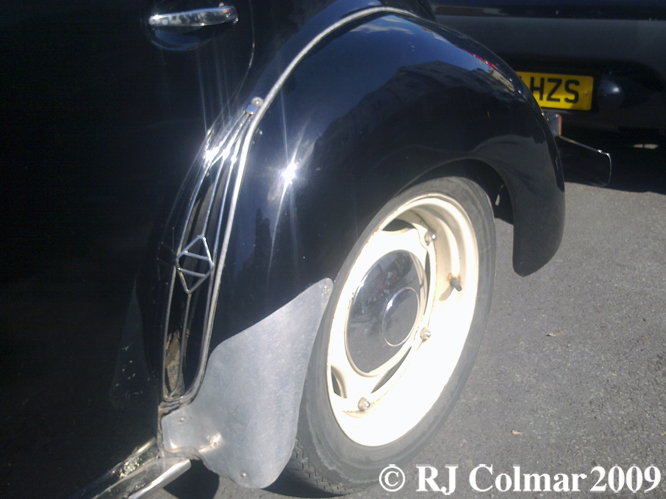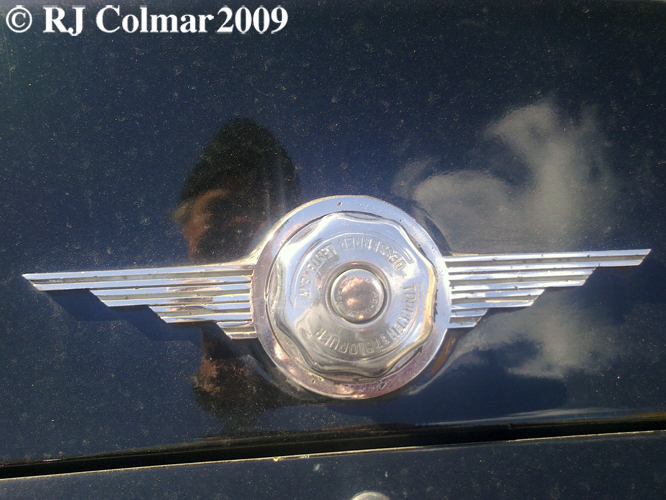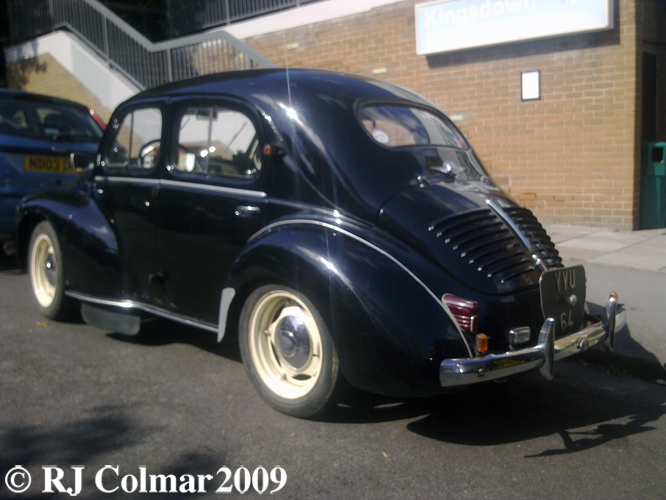Jean Rédélé’s rear engined Alpine A110 “Berlinette” launched in 1961 was an evolution of the A108. Distinguishing features include proprietary Renault R8 running gear in place of the Renault Dauphin running gear of the A108 and a larger tail for the fiberglass body to accommodate the larger R8 derived motors.
The cars were manufactured at the Dieppe factory, which today operates under the the Renault Sport banner, with further cars being assembled in Mexico under the name Dinalpin and perhaps most unlikely of all from 1967 to 1969 in Bulgaria under the name ‘Bulgaralpine‘.
Over the years of production up to 1977 the choice of straight 4 cylinder engine sizes ranged from 95 hp 1.1 liters / 67 cui through to 125 hp 1.6 liters / 97 cui, the latter giving the a top speed of 130 mph and zero to 60 mph in 7 seconds.
With these sorts of performance figures the vehicle was a shoe in for a successful competition career in particular on tarmac rallies, Jean Vinatier won the French National Rally title in 1969 in an A110 and both Ove Anderson (1971) and Jean-Claude Andruet (1973) won the Monte Carlo Rally in A110’s the latter victory contributing to Alpine Renault, rebranded after Renault’s 1970 buy out, winning the first World Rally Championship in 1973.
The A110 cars also have a successful track racing history in Europe and the United State still winning its class in races as late as 1980.
During the course of finding out about the A110 I have found several inaccuracies one that the A110 was inspired by Colin Chapmans Lotus Elan, this is not true the A110 preceded the announcement of the Elan by 1 year. Also I have seen the A110 mentioned in connection with the Brazilian assembled Willys Interlagos, the Interlagos built from 1962 to 1966 and most successfully raced by Wilson Fittipaldi, brother of twice world champion and Indy 500 winner Emerson, was based on the A110’s predecessor the A108.
This particular vehicle seen at Castle Combe Classic and Sport Car Action Day was originally exported to Renault St Denis, Il de La Réunion out in the Indian Ocean between islands of Madagascar and Mauritius, in 1973. It immediately made an impact sweeping Réunion’s two biggest events the ‘Mille Kilometers‘ and ‘Tour de la Réunion‘ from 1973 to 1975. The car was acquired by it’s current owner in 1991.
Thanks for joining me on this ‘Dominating Réunion’ edition of ‘Gettin’ a li’l psycho on tyres’ I hope you’ll join me again. Don’t forget to come back now !

